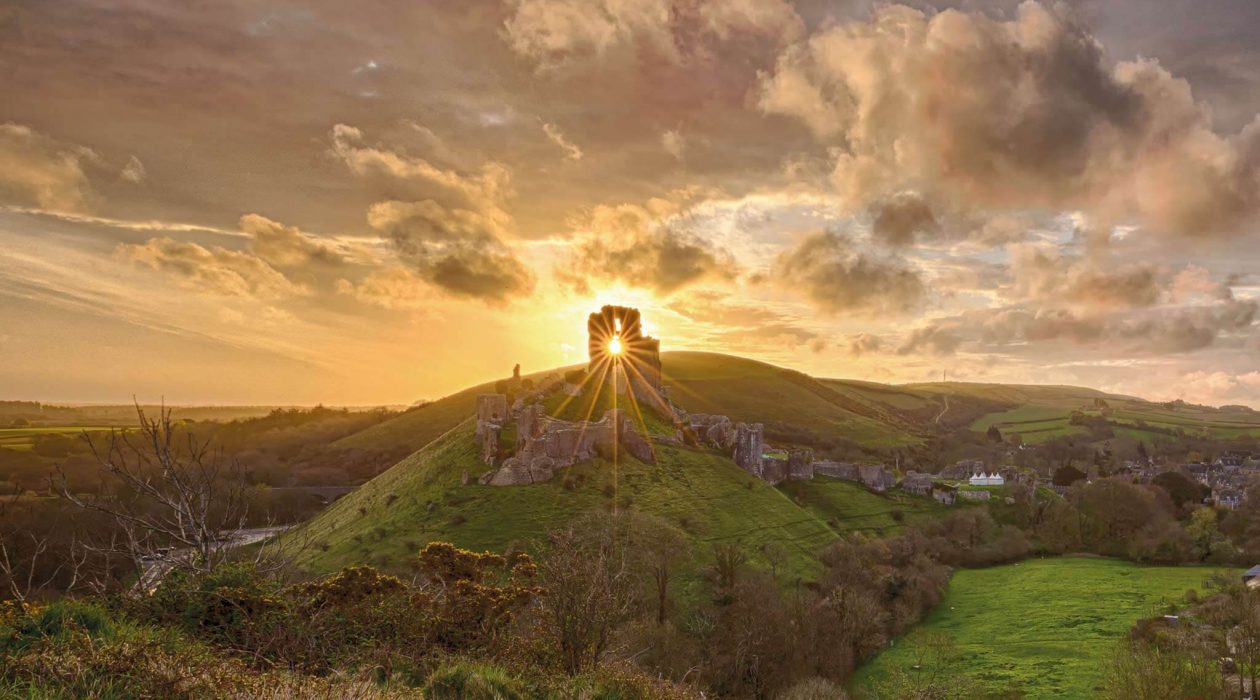Special quality: Landscape
Contrast and diversity – a microcosm of England’s finest landscapes…

Contrast and diversity – a microcosm of England’s finest landscapes…

The Dorset National Landscape is much more than one fine landscape – it is a collection of fine landscapes, each with its own characteristics and sense of place, including different landforms, soils and wildlife habitats. Contrasting and complex geology gives rise to the chalk downland, limestone country, greensand ridges and clay vales that occur in the Dorset National Landscape; they are often closely juxtaposed to create striking sequences of beautiful countryside that are unique in Britain. The transitions between the component landscapes of the mosaic are often particularly attractive, with strong contrasts in some areas and a gentle transition of character in others.
The ridge tops of and chalk escarpments add an extra dimension to the Dorset National Landscape by providing stark contrasts of landform that serve to increase and emphasise its diversity. These areas of higher ground also allow the observer uninterrupted panoramic views to appreciate the complex pattern and textures of the surrounding landscapes.
Nowhere is the contrast and diversity of this rich assemblage of landscapes more graphically illustrated than in the Isle of Purbeck. Here, many of the characteristic landscapes of the Dorset National Landscape are represented on a miniature scale to create scenery of spectacular beauty and contrasts, which mirrors that of the whole National Landscape.
Within this overall context, there are numerous individual landmarks, such as hilltop earthworks, monuments and tree clumps that help to contribute an individuality and sense of place at a local scale.
In addition to its outstanding scenic qualities, the National Landscape retains a sense of tranquillity and remoteness that is an integral part of these landscapes. It retains dark night skies and an undeveloped rural character. The National Landscape’s Landscape Character Assessment, ‘Conserving Character’, adds further understanding of the contrast and diversity of the Dorset National Landscape landscapes and their management requirements.

The area’s diverse landform and striking changes in topography are dictated by the National Landscape’s varied geology, upon which subsequent erosion has occurred. This ‘land-shape’ has then been inhabited, built upon and in some places modified by several thousand years of population.
Landscape and natural beauty
Landscape is a framework which encompasses geological, hydrological, biological, anthropological and perceptual qualities. The Dorset National Landscape Landscape Character Assessment describes these features and qualities in more detail, by subdividing the area into character types and character areas.
Running throughout each character area are qualities that make the National Landscape inspiring and special, such as the sense of tranquillity and remoteness and sweeping views across diverse landscapes. The variety of landscape types found within the area is a defining feature of the National Landscape underpinned by diverse geology, with dramatic changes from high chalk and greensand ridges to low undulating vales or open heaths. It is often the transition from one landscape type to another that creates drama and scenic quality. At the local level, individual landmark features and boundaries add to character.
Under this aspect of the National Landscape’s special qualities and natural beauty, however, the main consideration is for the characteristics and qualities of the landscape, such as the undeveloped rural character, tranquillity and remoteness, dark night skies and panoramic views. Through the main modes of interaction with the place, this plan considers some of the broad issues that can affect them. Landscape character and condition are more fully described in our Management Plan.>
Tranquillity
Tranquillity is a landscape quality from which we get a lot of benefit: that sense of relaxation, recuperation and recovery in the countryside is related to it. In the busy modern world, National Landscapes and National Parks have important reserves of tranquillity that could improve all of our lives. Our understanding of tranquillity informs our planning and conservation work so that we can help ensure this National Landscape is a place rich in it.
We’ve worked extensively with researchers at the University of Winchester to develop our understanding of what tranquillity means to people and found that what we can see has a greater bearing on our experience of tranquillity than what we can hear. This may seem obvious, but national policy for conserving tranquillity is often interpreted solely as a noise issue.
Find out more about the Landscape Assessment and Tranquillity